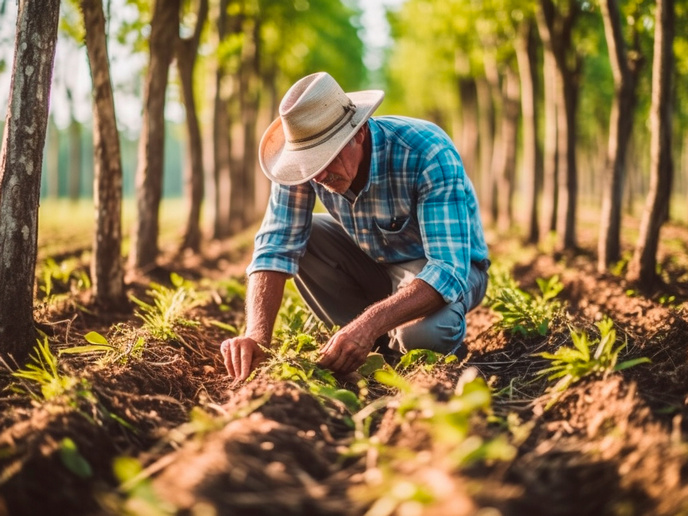With crops, two or more is better than one
After being passed over for many decades in favour of industrial agricultural practices, intercropping – the practice of growing two or more crops in proximity to each other – is slowly making a comeback. Unfortunately, it is still not widely accepted by European farmers, which is what the EU-funded LEGUMINOSE(opens in new window) project promises to tackle. Launched in 2022, LEGUMINOSE is working to boost awareness and acceptance among farmers by providing science-based, farmer-led and economically viable systems and techniques for legume-based intercropping. “Interest is growing in intercropping [again] because farmers increasingly understand it improves their soil health,” states Jerry Alford, an organic farmer and farming adviser at LEGUMINOSE project partner Soil Association, in a news item(opens in new window) published on ‘The Sun Times’ website. The potential of this renewed interest to make regenerative agriculture practices more profitable can “open up a whole new way of farming,” Alford states. The project has released a video(opens in new window) on making European agriculture more sustainable with legume-based intercropping.
What few farmers know
Legume-based intercropping has a number of benefits, yet only 2 % of Europe’s arable land is used for this purpose. “In the case of growing a legume and cereal together, we know there is nutrient transfer between the two crops,” comments the Soil Association adviser, explaining that this lowers the need for synthetic fertilisers and associated costs. Other benefits resulting in higher profitability include fewer weeds, pests and diseases, and a higher resistance to extreme weather. LEGUMINOSE is investigating the benefits of intercropping in eight European countries, Egypt and Pakistan through a series of trials where farmers grow different crops on the same land. During the project, a total of 180 living labs will offer farmers practising monoculture the opportunity to introduce a strip of intercropped cereals and legumes, such as wheat and peas or barley and broad beans. In each living lab, farmers will choose the crops and techniques – drilling depth, seed mix and planting methods – most suited to their area. The first steps have been taken, but there is still a long way to go before intercropping enters the mainstream. “Many farmers still don’t know what intercropping is,” observes Dr Shamina Imran Pathan of LEGUMINOSE project coordinator University of Florence, Italy. “That’s why we need to involve more and more farmers to increase their knowledge about mixing crops together.” Results so far have been promising. One trial has shown that wheat intercropped with clover entirely eliminates a parasitic weed called dodder. This could lessen the need for herbicides and reduce input costs. The data obtained will be used to create AI-driven forecasting models, which will eventually be made available to farmers as a web-based tool. “Farmers can use this to input criteria like their soil type and climate, and the tool will then tell them what combination of crops could work for them,” explains Dr Pathan. LEGUMINOSE (Legume-cereal intercropping for sustainable agriculture across Europe) will also be participating in the Centennial Celebration and Congress of the International Union of Soil Sciences(opens in new window) to be held in Florence from 19 to 21 May 2024. Project partners are chairing a session on ‘Optimization of plant-soil-microbe interaction under crop diversification’(opens in new window). The call for the submission of abstracts(opens in new window) for the conference is now open. Abstracts can be submitted until 15 January 2024. For more information, please see: LEGUMINOSE project website(opens in new window)



